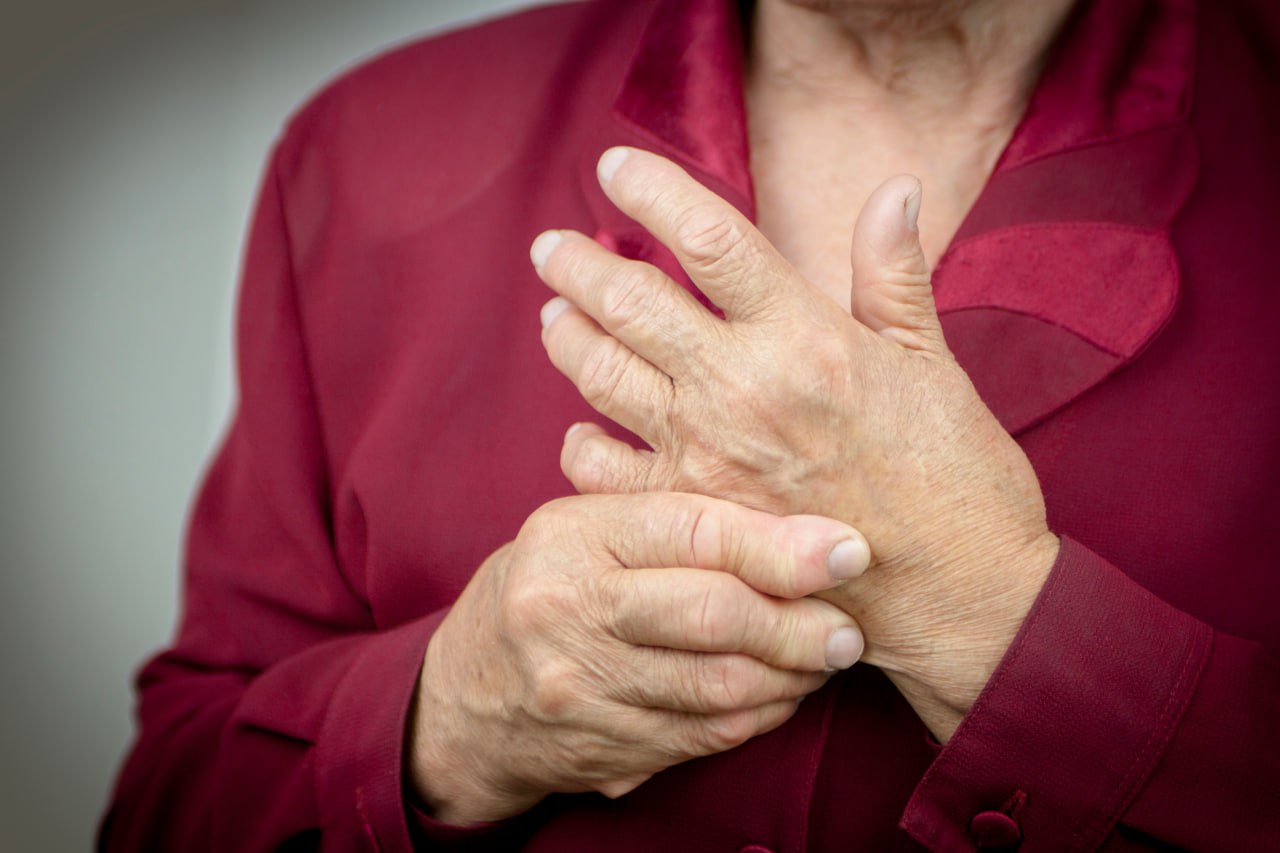Possible Accompanying Symptoms Of Limited Joint Mobility
If you’re experiencing stiffness or a limited range of motion, it’s important to be aware of any other symptoms that might occur simultaneously. Identifying these signs can help your doctor accurately diagnose your condition and develop an effective treatment plan. Common symptoms that may accompany limited joint mobility include:
- Joint Pain: Pain in the joint can range from mild to severe and may be localized or radiate throughout the body. Joint pain, along with limited mobility, might indicate an underlying health condition such as bursitis or arthritis.
- Swelling: Swelling around the joints can occur due to an underlying injury or condition causing inflammation, such as gout or tendinitis.
- Warmth and Redness: Redness, warmth to the touch, and tenderness in the joint can be signs of infection or inflammation.
- Weakness: Weakness or instability in the joint might indicate a nerve issue or an underlying condition like fibromyalgia or rheumatoid arthritis.
- Clicking and Grinding Sensation: A clicking and grinding sensation in the joint can suggest that the cartilage is wearing down, which is a common sign of osteoarthritis.
- Fatigue: While not always directly related to limited joint mobility, fatigue can be a sign of an underlying condition, such as lupus, contributing to joint restrictions.
- Numbness or Tingling: Experiencing numbness or tingling in your joints can indicate an underlying nerve issue.
Factors Influencing Stiffness And Decreased Mobility
Several factors can contribute to limited joint mobility. Some of the most common causes include:
- Inflammation: This occurs when the body releases chemicals to promote healing in areas that have been injured or infected. Inflammation is characterized by swelling, redness, heat, and pain, which can lead to a limited range of motion and stiffness due to increased pressure on the joint.
- Muscle Stiffness: Muscle stiffness and tightness can arise from various factors. Overworked muscles, disuse, or inactivity can lead to stiffness. It may also be linked to underlying medical conditions such as fibromyalgia.
- Joint Dislocation: A dislocation happens when the bones of a joint move out of their normal position, causing significant pain and stiffness. Joint dislocations are typically the result of traumatic injuries.
Possible Medical Conditions Leading To Constricted Movements
There are various medical conditions that can cause inflammation, stiffness, and joint dislocation, limiting your mobility. Here are some conditions to be aware of:
- Fibromyalgia: This chronic condition is characterized by widespread musculoskeletal pain, fatigue, and sleep disturbances. Changes in pain signal processing can increase muscle tension and tightness, leading to joint stiffness.
- Osteoarthritis: A degenerative disease affecting joint cartilage. As cartilage wears down, it can result in joint stiffness, pain, and a decreased range of motion due to reduced cushioning and support.
- Frozen Shoulder: Also known as adhesive capsulitis, this condition causes pain, stiffness, and limited shoulder movement. Typically affecting one shoulder at a time, it can last for months or years, often due to joint capsule inflammation, injury, or underlying conditions like diabetes.
- Rheumatoid Arthritis: An autoimmune disease where the immune system attacks joint tissue, causing inflammation, pain, stiffness, and reduced range of motion.
- Knee Pain: This can stem from injuries, arthritis, and bursitis, leading to joint stiffness and limited movement.
- Osteoporosis: Characterized by weakened bones prone to fractures, osteoporosis can also cause joint pain and stiffness due to decreased bone density.
- Joint Pain: Often associated with injuries or underlying conditions like arthritis, joint pain frequently accompanies stiffness.
- Ankylosing Spondylitis: A type of arthritis that primarily affects the spine, causing stiffness and reduced movement, especially in the lower back.
- Legg-Calve-Perthes Disease: A childhood disorder where the top of the thigh bone receives insufficient blood supply, leading to hip joint stiffness, pain, and limited movement.
- Cerebral Palsy: This neurological disorder impacts muscle tone and coordination, resulting in muscle stiffness and restricted movement in affected areas.
- Tendonitis: Inflammation of the tendons caused by overuse or repetitive motion, leading to pain, swelling, and stiffness in the affected area.
When Should You See A Doctor
Diagnosing Limited Range of Movement
Conventional Treatment Options
Medications
While medications can alleviate pain and stiffness, this relief is typically temporary as they do not address the underlying cause.
- Over-The-Counter Pain Relievers: OTC pain relievers like acetaminophen and ibuprofen can help reduce inflammation and pain.
- Topical Creams or Ointments: Applying topical creams or ointments directly to the affected area can reduce swelling and improve mobility.
Surgical Interventions
Surgery is generally considered a last resort for treating joint stiffness and limited range of motion due to its invasive nature and associated costs.
- Arthroscopy: This minimally invasive surgical procedure is used to diagnose and treat joint problems by inserting a small camera into the joint to view the affected area and repair or remove damaged tissue, cartilage, or bone.
- Joint Replacement: In severe cases where other treatments have not been effective, joint replacement surgery can be performed to replace the damaged joint with an artificial one. This procedure is typically reserved for extreme situations.
The NextPain Care Approach To Joint Pain Issues
Conditions We Treat In NextPain Care

Frozen Shoulder Pain Treatment
Frozen shoulder, or adhesive capsulitis, is a condition characterized by inflammation of the shoulder joint capsule, leading to pain, stiffness, and restricted range of motion. This condition can significantly impact daily activities and overall quality of...

Rheumatoid Arthritis Pain Treatment
Rheumatoid arthritis can be a debilitating and painful condition that causes swelling, joint damage, and immobility. NextPain Care offers a comprehensive approach to treating the pain associated with rheumatoid arthritis and the condition itself. We aim to...

Osteoporosis Pain Treatment
Although osteoporosis doesn't directly cause chronic pain, it can lead to conditions such as bone fractures, joint pain, and nerve damage that result in chronic pain. This pain can be debilitating. At NextPain Care, we manage osteoporosis with our three-level...

Joint Pain Treatment
Joint pain can be debilitating, making even simple daily tasks difficult for many people. At NextPain Care, we offer a comprehensive, multi-level approach to treatment. Our options range from conservative therapies to advanced surgical procedures, all aimed...
Self-Care Tips For Joint Pain Prevention
Joint pain can significantly impact your daily life, but with proactive self-care, you can prevent or alleviate discomfort. By incorporating these practices into your routine, you’ll be taking essential steps towards a more comfortable and active lifestyle. Here are some effective self-care tips to help you maintain healthy joints and reduce the risk of joint pain:
- Include daily stretching and exercise in your routine.
- Keep a healthy weight.
- Use protective gear during physical activities.
- Practice good posture while working.
- Avoid sitting or standing for extended periods.
- Follow a nutritious diet and stay hydrated.
- Ensure your body gets adequate rest and recovery.
Addressing Joint Stiffness and Limited Range of Motion
Stiff joints slowing you down? Get it checked with NextPain Care.
